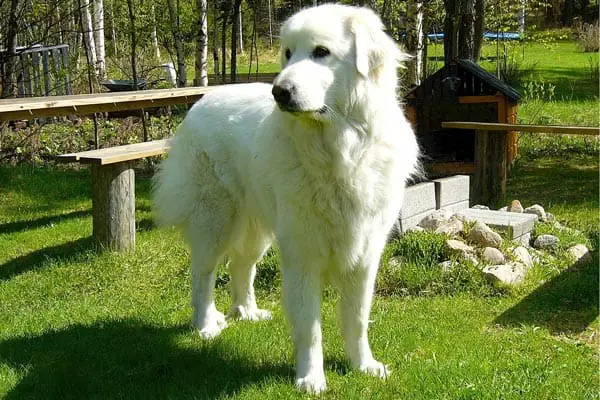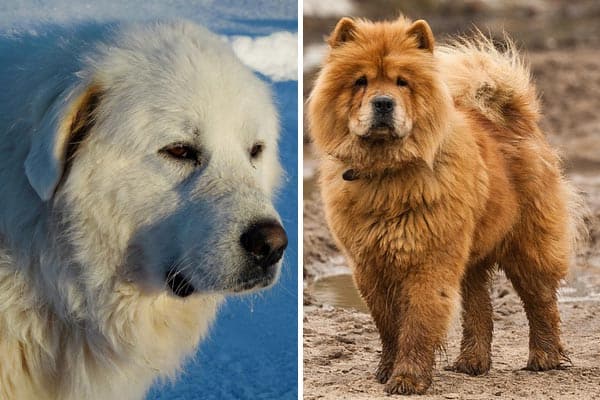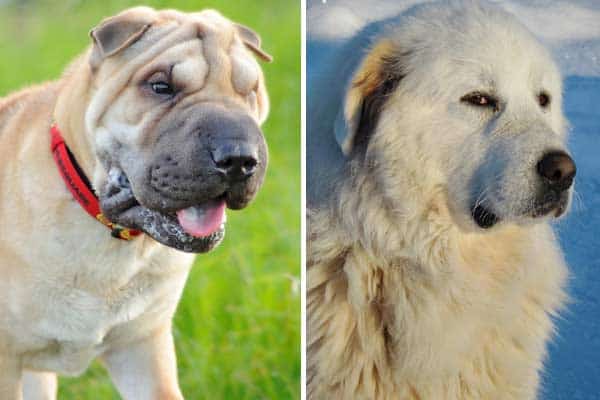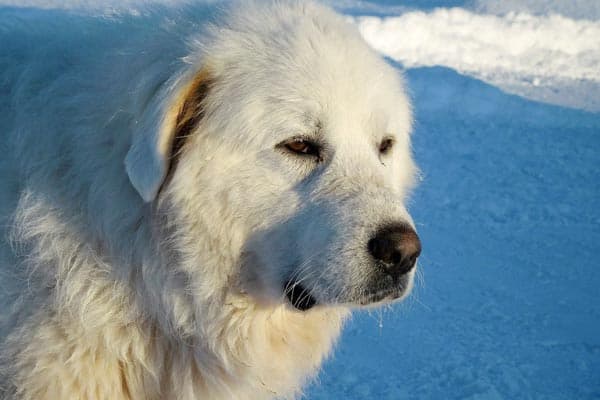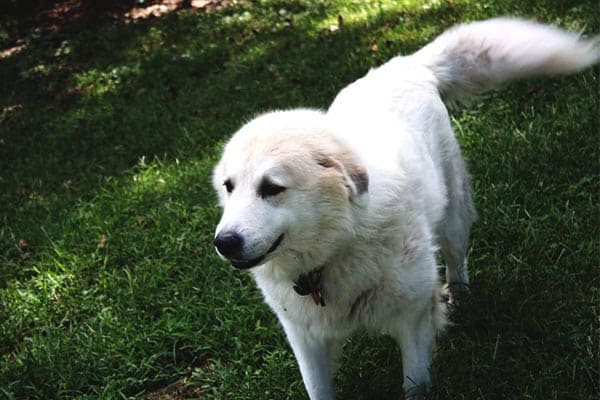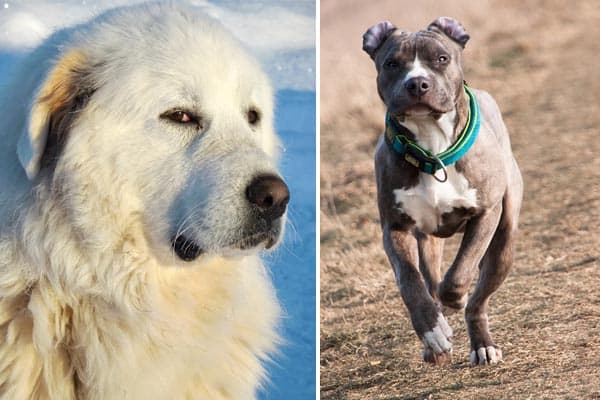Can a Great Pyrenees Puppy Stay Out in the Cold: Don’t Do This for a Healthy Puppy
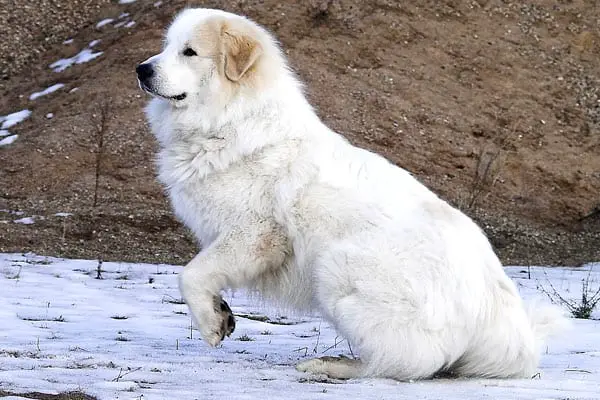
The Great Pyrenees is a truly enormous purebred dog breed with an ancient and noble heritage as a working dog breed.
These dogs are huge even before you add in their thick, double-layer, working dog coat! They are gigantic in puppyhood and even bigger as adults.
But just because you have chosen a large to giant size dog breed does not mean your growing puppy can tolerate the same types of things that won’t bother an adult Great Pyrenees.
Puppies need a different type of care and treatment from adult dogs, regardless of what breed that puppy comes from.
In this article, learn how to care for and house your Great Pyrenees puppy to make sure your dog grows up strong and healthy.
Can a Great Pyrenees Puppy Stay Out in the Cold?
The answer to the question of whether a Great Pyrenees puppy can stay out in the cold is a solid “no.” The reason is simple. Adult Great Pyrenees dogs have a thick, warm, double-layer working-dog coat.
Great Pyrenees dogs have a single-layer puppy coat. So puppies do not have the type of dense protection from cold, insects, infection, abrasion, injury, and all the other issues that can arise when a puppy stays outside at night.
The great Pyrenees need to be housed securely indoors at night, just like all puppies, and not just for their physical well-being. They are “people” dogs and crave being with their people.
See a Great Pyrenees Puppy Grow Up
This owner-made YouTube video showcases the rapid growth of her Great Pyrenees puppy, who went from 16 pounds (at eight weeks old) to over 100 pounds (at 12 months old).
And since a large to giant breed dog like the Great Pyrenees doesn’t stop growing at one-year-old, her dog is likely to get even larger!
Facts About the Great Pyrenees Adult Dog Coat
As the Great Pyrenees Club of America points out, these dogs may have tremendous fur coats, but they actually don’t need a lot of daily grooming or coat maintenance.
However, once your puppy grows up and starts the year-round and seasonal shedding these hairy dogs are known for, you may need to do a lot of household maintenance to keep hair from coating everything you own, including yourself!
The Great Pyrenees dog breed has a true working dog coat. This coat is designed for dogs that have been bred to live and work in very cold climates. The Great Pyrenee’s dog takes its breed name from the mountain range called the Pyrenees Mountains.
These dogs traditionally worked outside full-time with shepherds and peasant farmers. Their job included herding livestock and guarding their charges against hungry predators and poachers.
This is why the Great Pyrenees has the type of thick coat they do in adulthood.
Inner coat layer
The inner layer of the Great Pyrenees dog’s adult coat is very thick and very soft. It looks and feels not unlike the type of down that might fill the comforter on your bed or the winter coat in your closet.
And it serves exactly the same purpose – it is the dog’s insulation. This layer of the coat sits right next to the skin and serves as a source of warmth in winter.
In summer, however, that insulation isn’t needed. Of course, in the Pyrenees Mountains at high altitudes, there is not a lot of warm-season to worry about, but during the brief warm season, much of that insulating undercoat gets shed out.
This protects the Great Pyrenees from overheating. The shed is dictated by the changing amount of daylight rather than the actual sense of temperatures warming up, which is why it can seem like your Great Pyrenees drops their coat well before summer arrives.
And in advance of the returning cold season, your dog will start growing in the thick insulating underlayer all over again for extra protection during the winter.
Outer coat layer
The outer layer of your Great Pyrenees dog’s adult coat is an all-purpose layer. This layer is more coarse to the touch and is longer. It has water-repellant properties to keep snow, ice, and rain away from the skin, so the dog stays dry.
The guard hairs also help protect against injury, abrasion, and pests. This layer of the coat sheds out all year long to keep all of the hair fully functional and doing its best work.
How Big Is the Great Pyrenees Adult Dog?
As the American Kennel Club (AKC) explains, the Great Pyrenees dog typically grows up to weigh anywhere from 85 to 100+ pounds.
And an adult dog can easily stand anywhere from 25 to 32 inches tall (paw pads to shoulder tops).
An adult male Great Pyrenees dog may outweigh a female adult by 15 pounds or more and stand up to two inches taller, although this is not always the case.
The best way to estimate how large your Great Pyrenees puppy will be when fully grown is to meet each parent’s dog and find out their vital statistics (height and weight).
This will help you track your Great Pyrenees puppy’s growth timeline and get a good sense of when your dog is about done growing.
Tracking the growth can be especially important to do with a large to giant breed puppy like the Great Pyrenees since these dogs can take 18 months or more to finish growing up.
How to Know Your Great Pyrenees Puppy Is Finished Growing
There is only one way to know for sure that your Great Pyrenees puppy is completely finished growing up.
That way is to ask your canine veterinarian to X-ray your dog’s leg bones. What will your dog’s vet be looking for?
They will look to see if the growth plates at the top of each of your dog’s long leg bones have closed. This basically means that the soft bits of cartilage at the top of each leg bone will have hardened.
Once X-rays confirm this has occurred, you can be certain your dog has reached their full adult height. However, your Great Pyrenees may spend several more months still putting on weight.
Signs That Your Great Pyrenees Puppy Is Getting Their Adult Coat
Unfortunately, as the Great Pyrenees Rescue Society explains, it is less simple to determine if your puppy’s full adult coat has begun to grow in (or finished growing in).
One sign you can watch for is to notice when your puppy begins shedding for the first time. And you will definitely notice – you don’t have to worry about missing this sign!
Great Pyrenees adults shed heavily twice per year, and they also shed heavily all year long. But for the first five months or so of your puppy’s life, you may not really see much, if any, shedding.
This is because your dog still has the single-layer puppy coat – the soft puppy hairs that will need to completely shed out and be replaced with the double-layer adult dog coat.
The Great Pyrenees Club of Southern Ontario explains that this dog breed may take up two full years before they grow into their full adult working dog coat.
This means that nearly everything about the Great Pyrenees growth cycle happens slowly, as is so often the case with large to giant dog breeds.
It is important to keep this in mind whenever you go outside with your Great Pyrenees puppy or young adult dog, especially if it is very cold where you live. Your dog won’t have the full protection they need to stay warm and may suffer frostbite or worse.
Dangers of Leaving Your Great Pyrenees Puppy Outside in the Cold
The Colorado Great Pyrenees Rescue Community has a lot to say about the dangers of leaving a Great Pyrenees dog of any age out in the cold.
It is true that all modern domestic dogs are descended from a lineage of ancient wild wolves. However, wolves can get too cold, just like dogs can.
Just because an animal is wild or has a wild ancestor doesn’t mean they don’t experience danger from extreme temperatures – the danger that can even prove fatal.
Two of the biggest dangers to Great Pyrenees dogs who live and work outside are frostbite and hypothermia.
Frostbite in Great Pyrenees dogs
The most common place veterinarians see frostbite on a Great Pyrenees dog is in the paw pads. This is the area of the body that is not protected by the coat and is in direct contact with icy conditions, often for long hours every day.
A dog that has gotten frostbite is going to be in pain and need treatment. You may see limping or a reluctance to run and play, or even lameness.
Hypothermia in Great Pyrenees dogs
Hypothermia is a medical term for what happens when the body temperature drops too low. Essentially, a Great Pyrenees can get hypothermia when they get too cold.
Here again, the dog’s extremities are not protected with thick fur like the body. And even though most of the dog is covered in insulating hair, this does not mean that extremely cold temperatures will not have an effect.
One reason many owners fail to realize their dog might get hypothermia is that it is easy to forget dogs have a higher normal resting body temperature than people do.
Normal canine body temperature can be anywhere from 101 to 102.5 degrees Fahrenheit (38.3 to 39.2 degrees Celsius), according to VCA Animal Hospitals.
Warning signs of hypothermia in a Great Pyrenees dog can include lethargy, shivering, shaking, trembling, mental fogginess (lack of alertness), or sleepiness.
Veterinarians advise learning what your unique dog’s resting body temperature is since there is a range.
If the temperature falls below about 99 degrees Fahrenheit (37.2 Celsius), then hypothermia is likely set in, and you need to get your dog to the vet right away for treatment.
But Great Pyrenees Are Bred to Live and Work in the Mountains!
As we mentioned here earlier, it is true that the Great Pyrenees dog breed has a long history of guarding and herding livestock in very cold, difficult mountain terrain.
However, a working Great Pyrenees dog is in constant motion, keeping the livestock animals grouped together and patrolling the premises of the herd for potential attackers and other threats.
As you know from your own exercise routine, when you are moving, your body temperature remains higher and more stable. But when you stop and rest, this is when you cool down.
In most cases, people today don’t keep Great Pyrenees dogs to work long hours outdoors. These dogs are kept as companion canines – as pets. So a dog that is left outside in the cold is more likely to be sitting or resting and to have a lower body temperature.
This is especially dangerous for the Great Pyrenees puppy who doesn’t yet have the thick and insulating double-layer adult working dog coat.
While it may be possible to allow your adult Great Pyrenees dog to remain outdoors for much longer periods of time in cold weather if you are playing or working together, a puppy should never be left outdoors in the cold.
But you should always consider the impact on your dog’s paws, which are covered only in the skin like your own feet. If your bare feet are cold in the winter, then your dog’s bare paws will be too.
A dog that is left outside when it is very cold may attempt to dig a burrow or hold to find some shelter and warmth. If you see this behavior, you can absolutely know your dog is too cold.
It takes the Great Pyrenees a long time to grow up. The more you learn about keeping your puppy safe, the healthier it will be.
